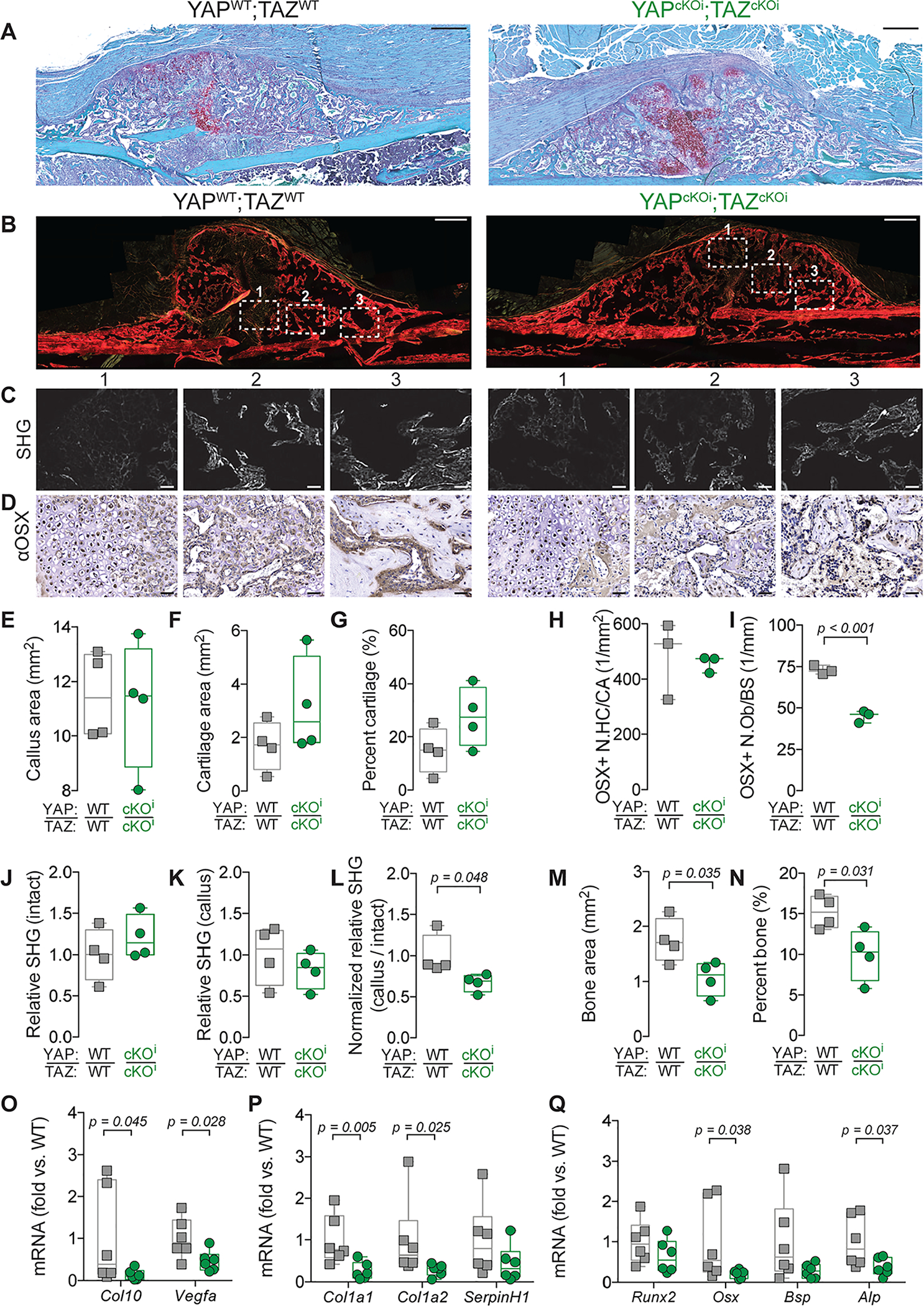Figure. 6. Adult onset-inducible, homozygous YAP/TAZ deletion from Osterix-expressing cells reduced callus bone formation.

A) Representative micrographs of Safranin-O-stained calluses at 14 dpf. B) Representative micrographs of Picrosirius Red-stained calluses at 14 dpf. White boxes outline three regions of interest in which second harmonic generated imaging (SHG) (C) and anti-Osterix (αOSX) immunostaining (D) are highlighted. E-G) Quantification of cartilage callus histomorphometry at 14 dpf. (E) Callus area, (D) cartilage area, and (E) percent cartilage area. H, I) Quantification of the number of Osterix-positive hypertrophic chondrocytes per cartilage area (OSX+ N.HC/CA) (H) and Osterix-positive osteoblasts per bone surface (OSX+ N.Ob/BS) (I). J-L) Quantification of relative SHG intensity per bone area at 14 dpf. (J) Intact cortical bone, (K) the newly formed callus bone, and (L) normalized callus-to-intact SHG intensity. M, N) Histomorphometry of bone formation. (M) Bone area and (N) percent bone area. O-Q) Messenger RNA was extracted from callus lysate preparations at 14 dpf and gene expression was normalized to 18S rRNA and quantified as fold-change relative to wild type. O) Col10 and Vegfa mRNA expression. P) Col1a1, Col1a2, and SerpinH1 mRNA expression. Q) Runx2, Osx, Bsp, and Alp mRNA expression. Data are presented as individual samples in scatterplots and boxplots corresponding to the median and interquartile range. Data were evaluated either by one way ANOVA with post-hoc Tukey’s multiple comparisons tests, or by two-tailed Student’s t-tests, as appropriate. Groups with significant pairwise comparisons are indicated by bracketed lines and p-values, adjusted for multiple comparisons where necessary. Sample sizes N = 3–4 per group for histomorphometry and N= 6 for gene expression. Scale bars indicate 50 μm for all high-power images and 500 μm for callus images.
